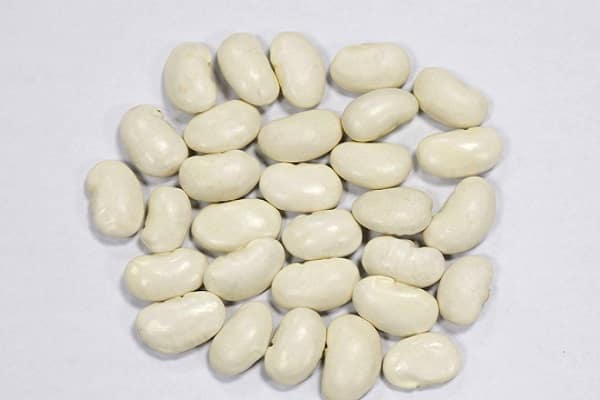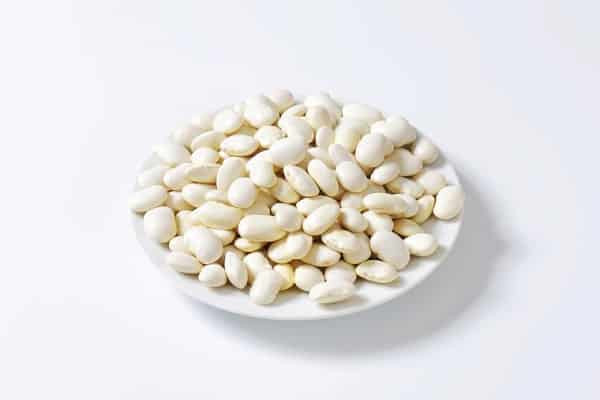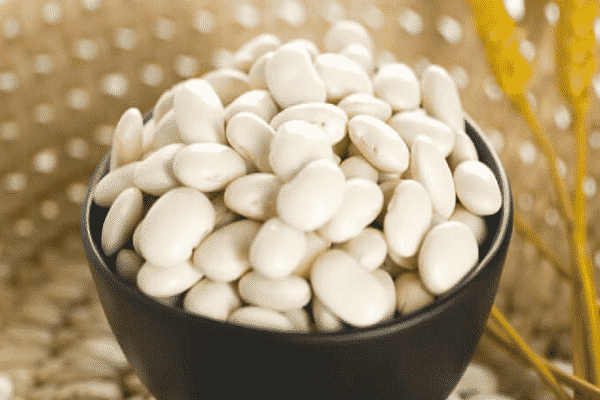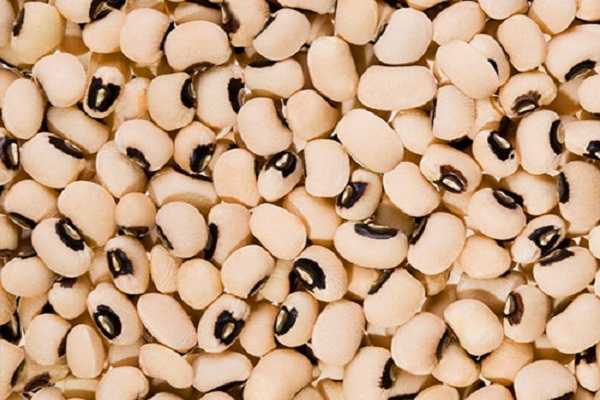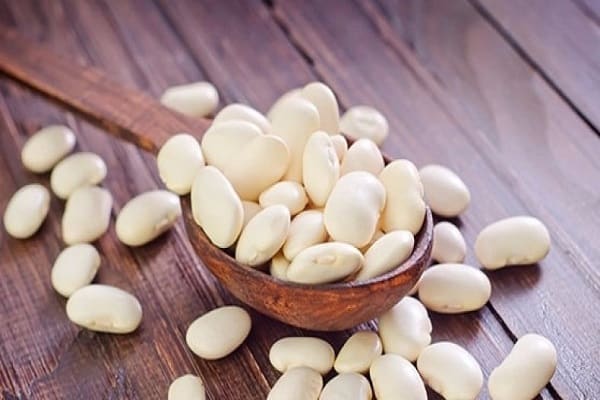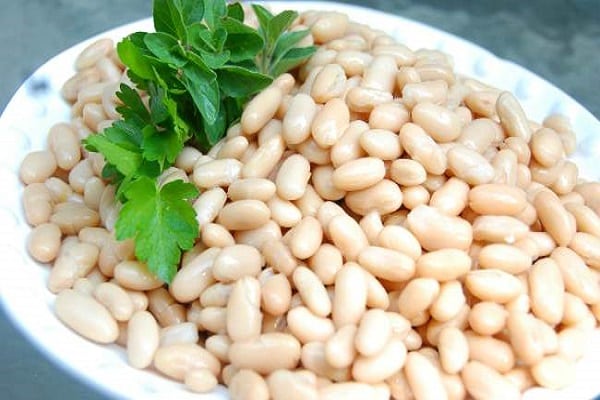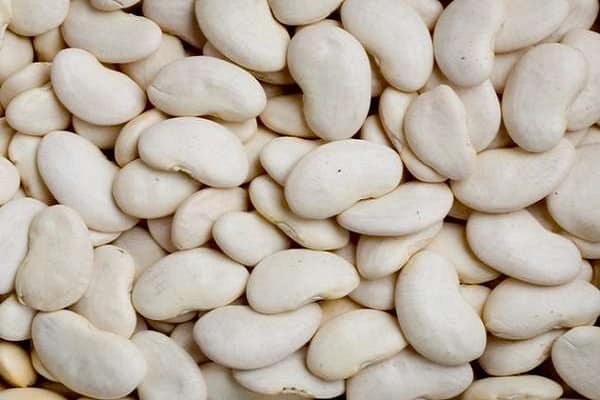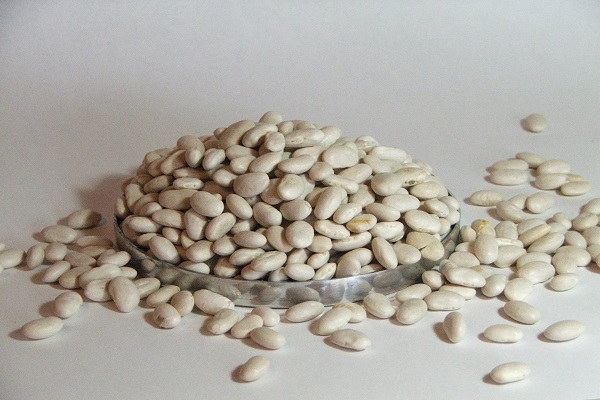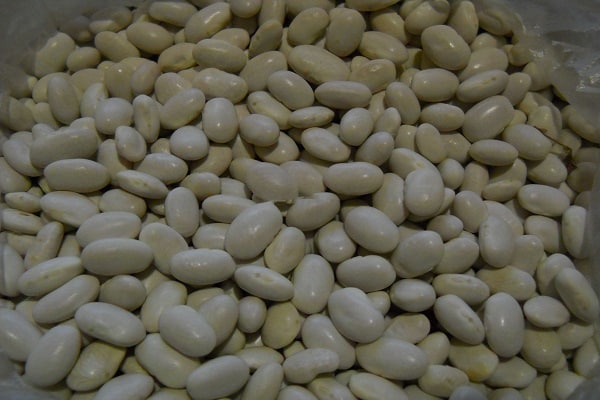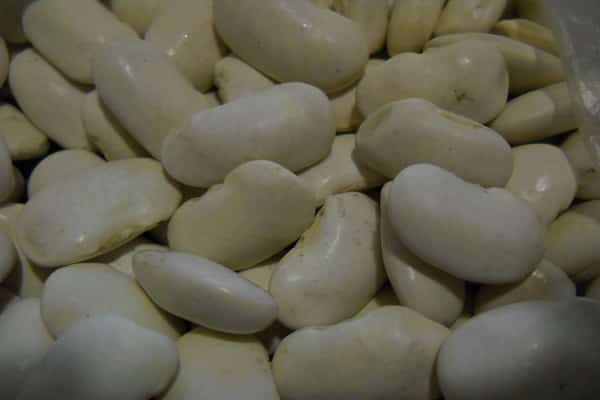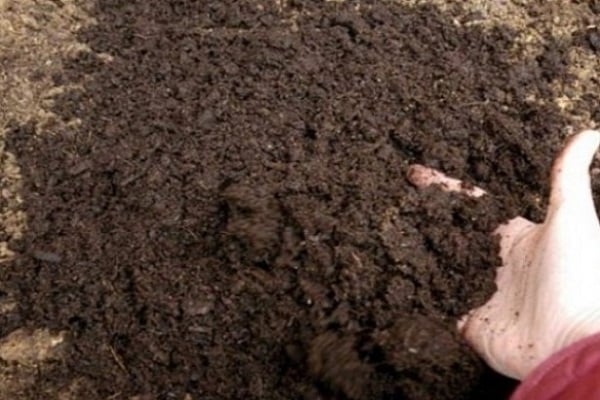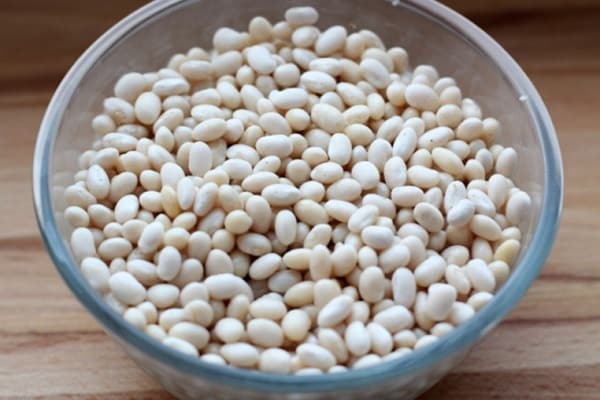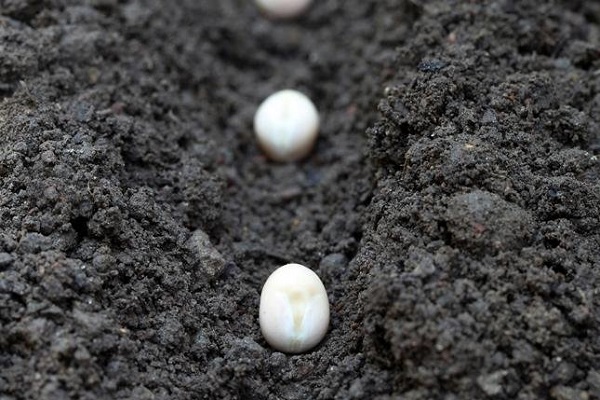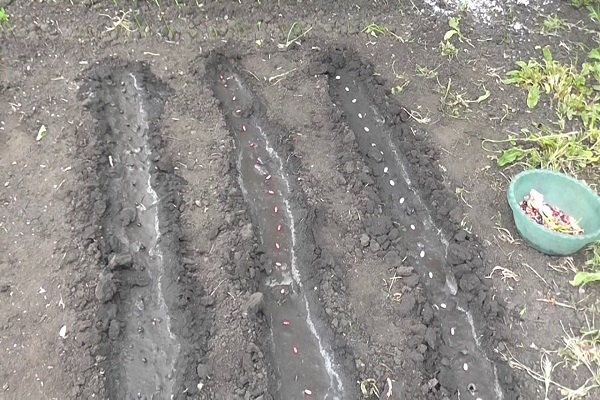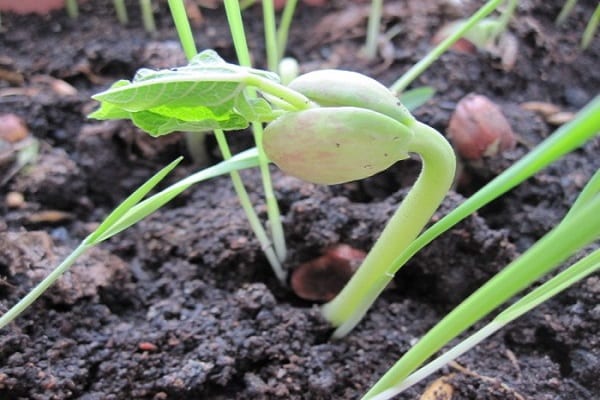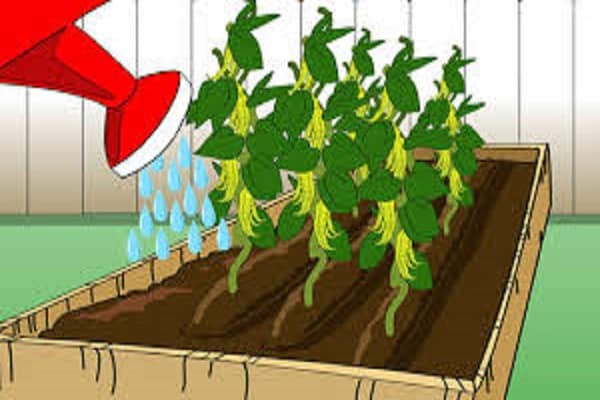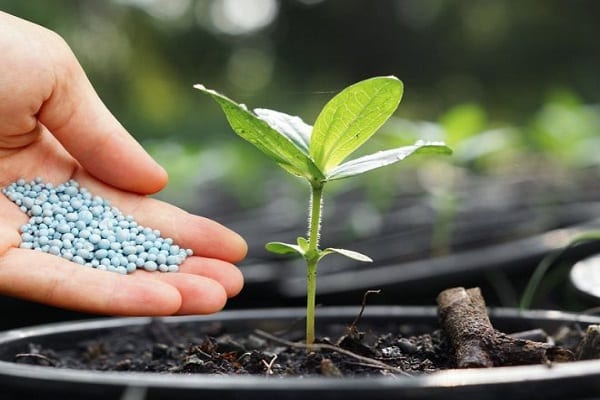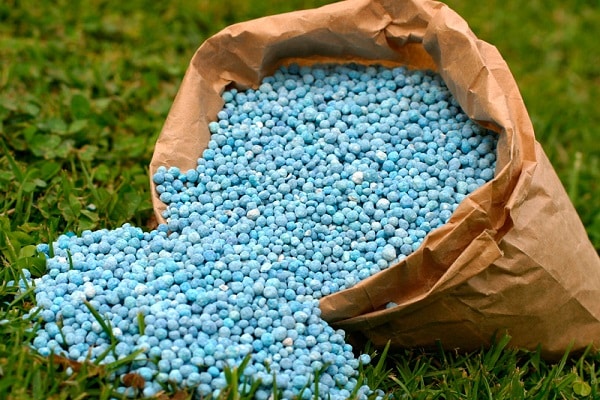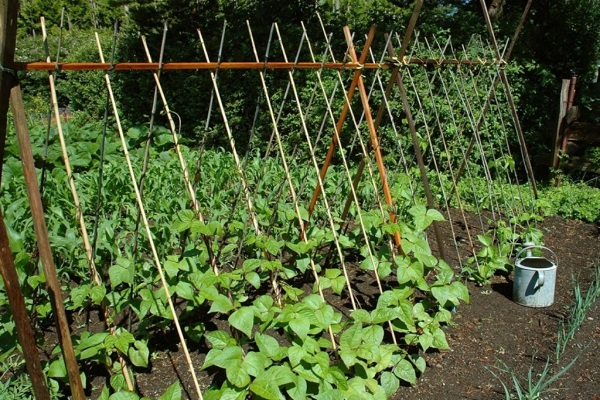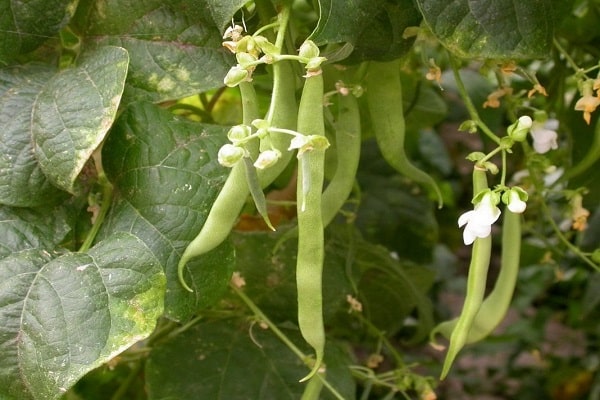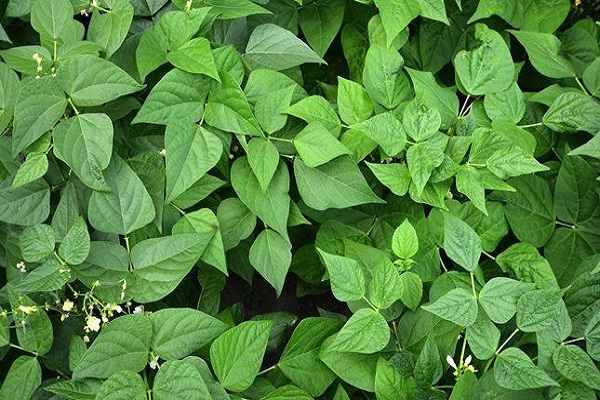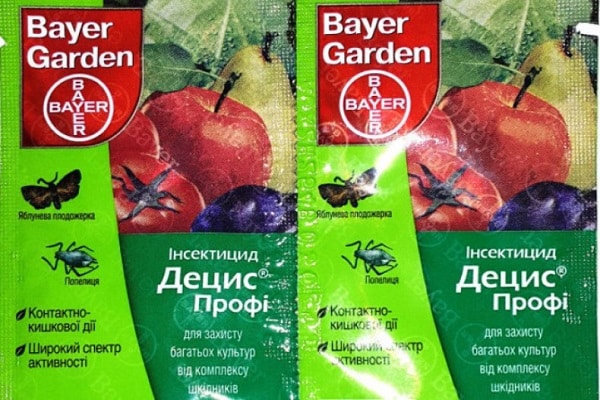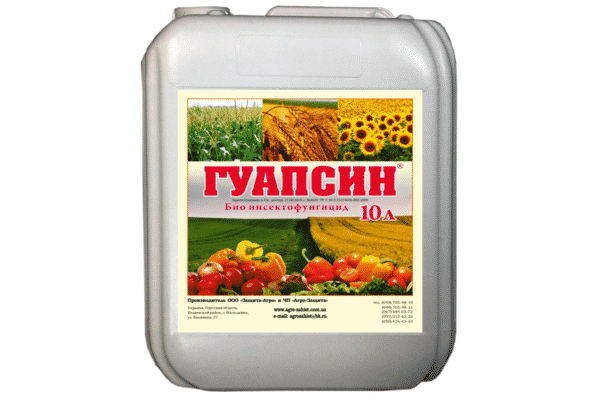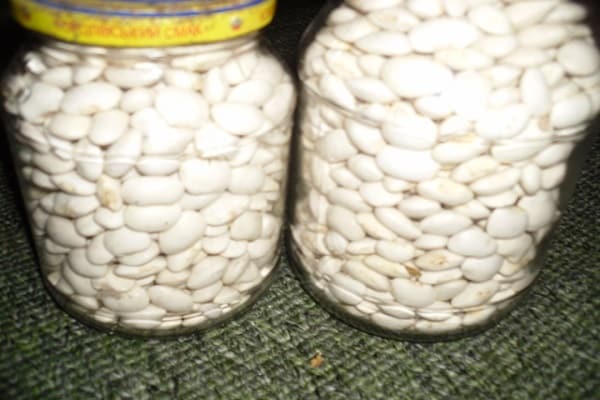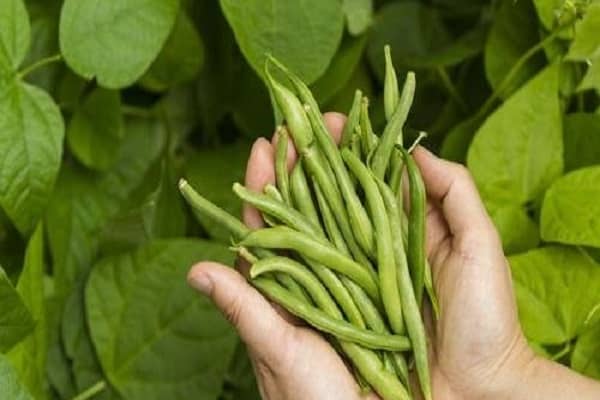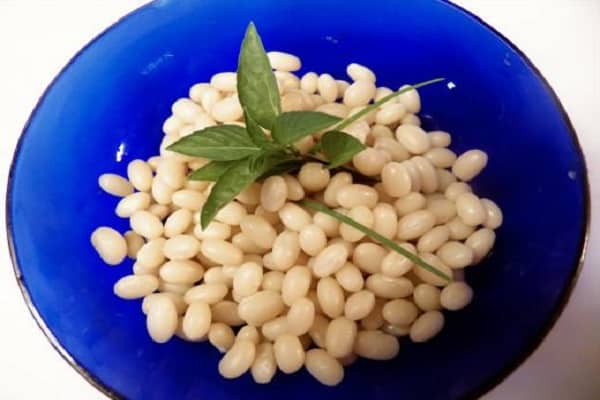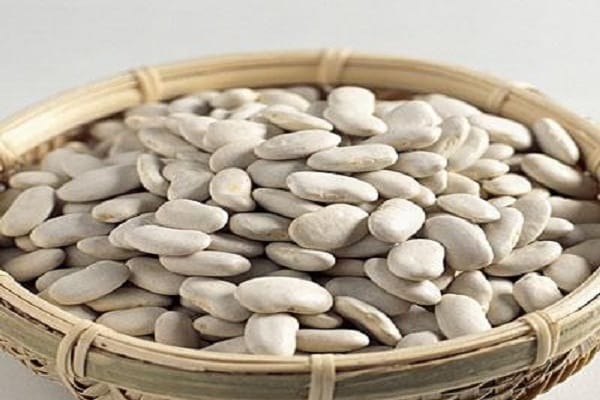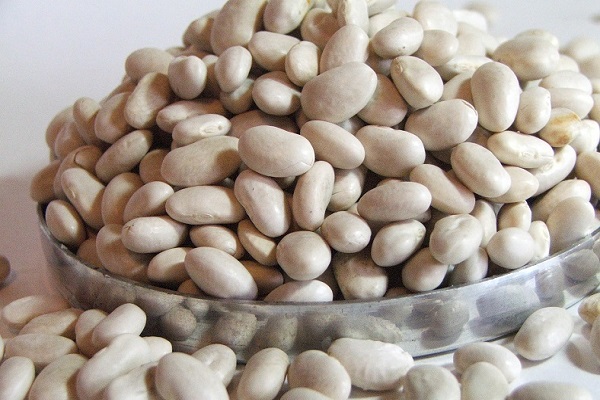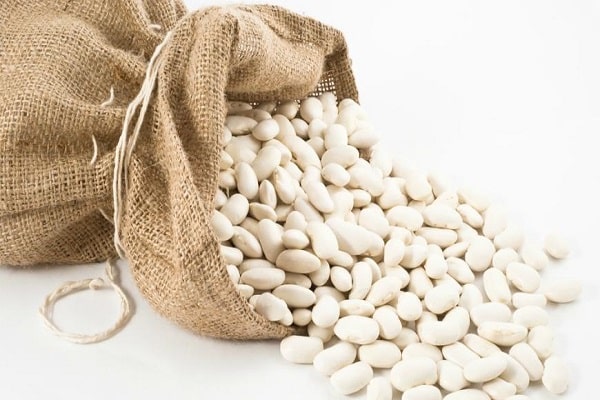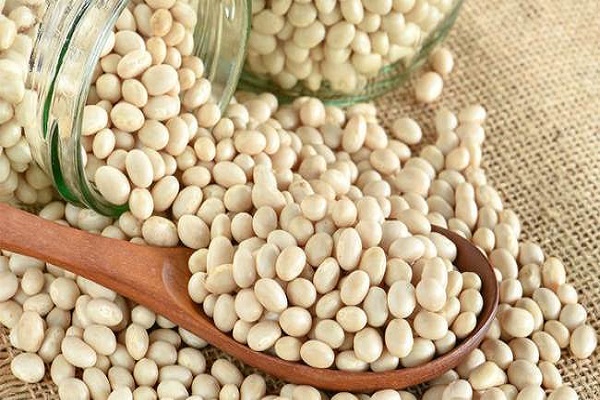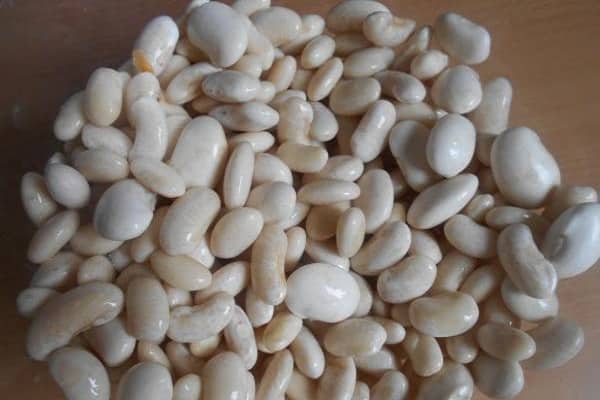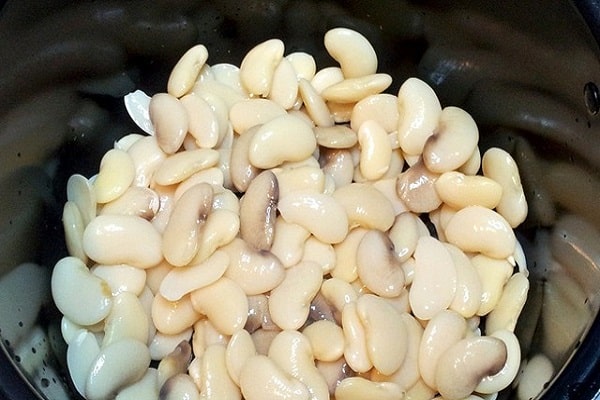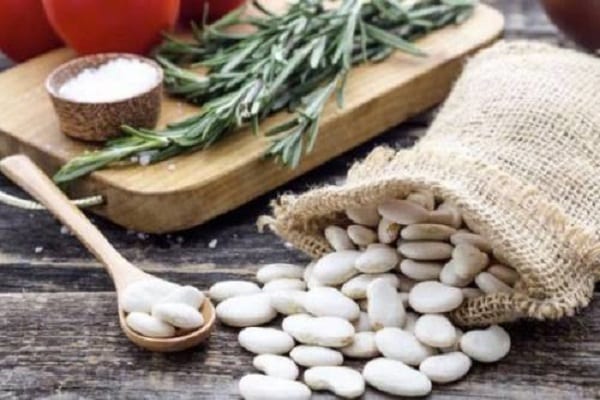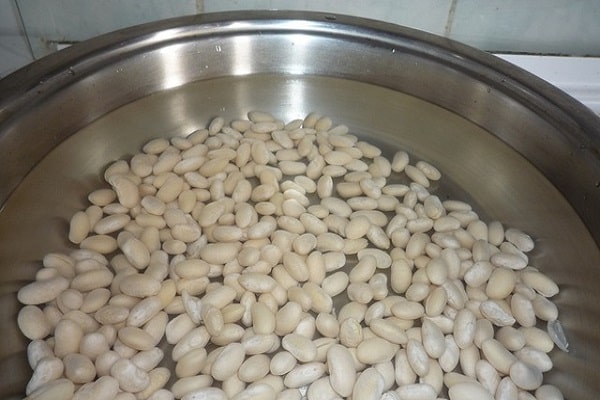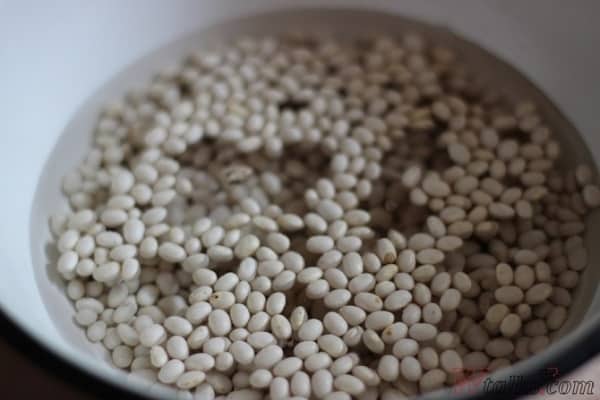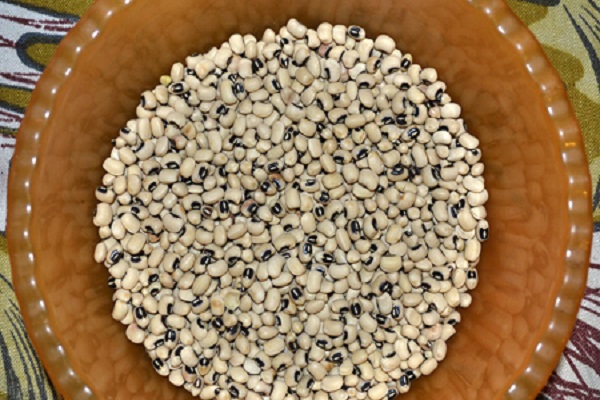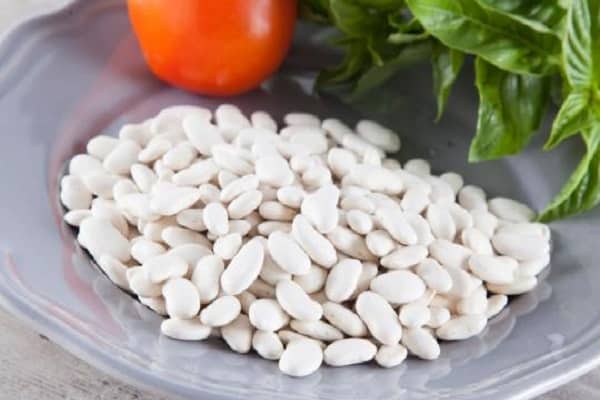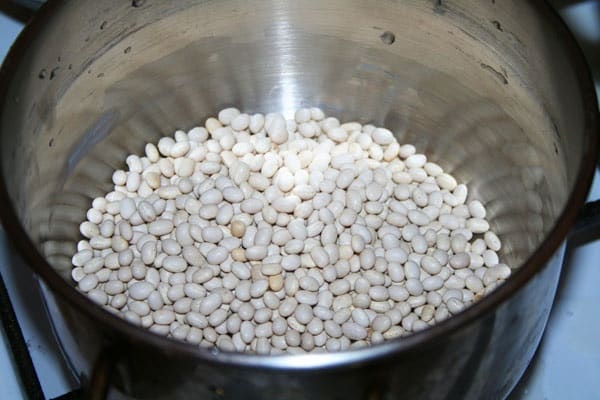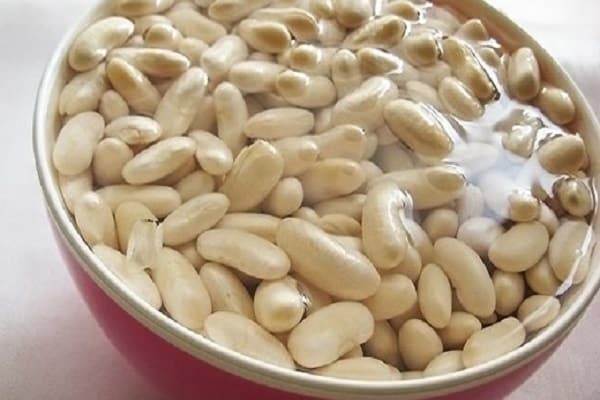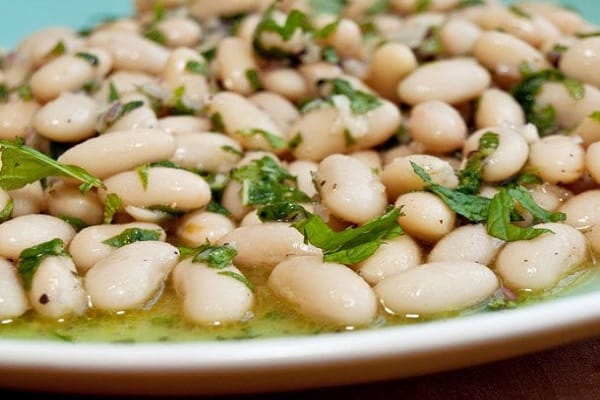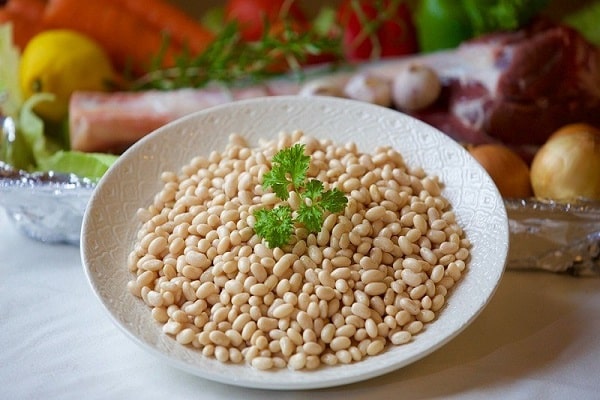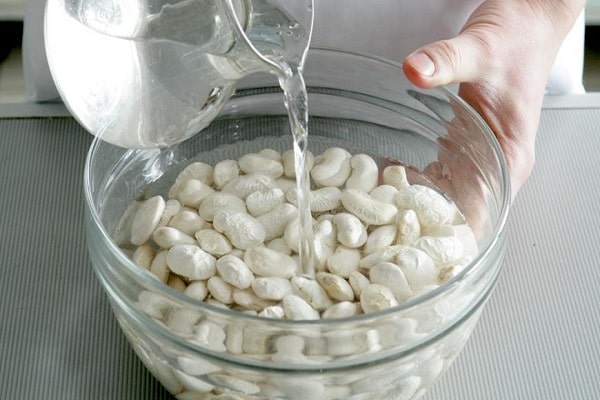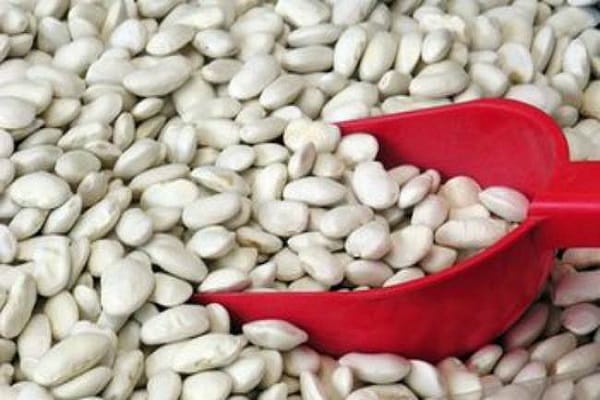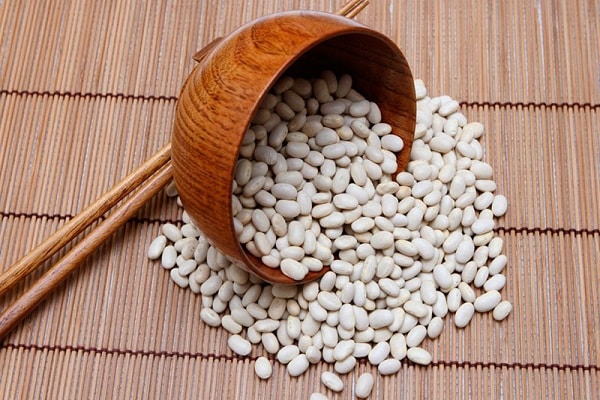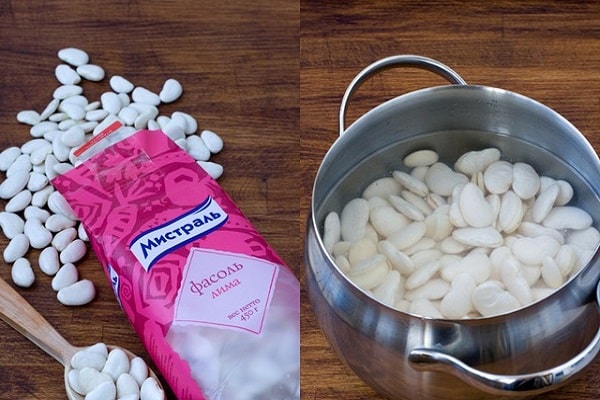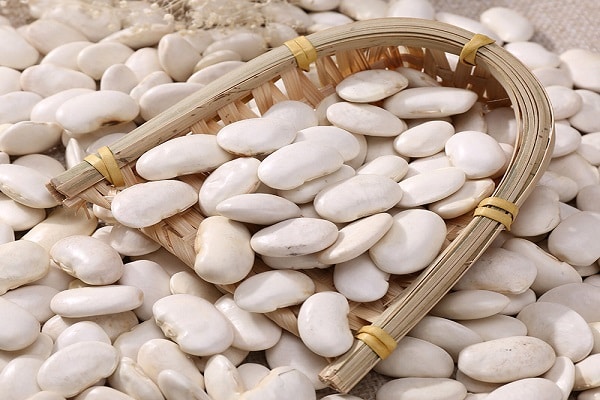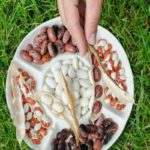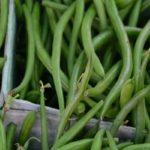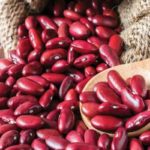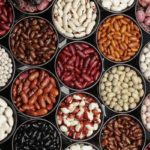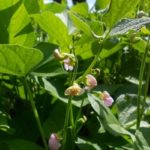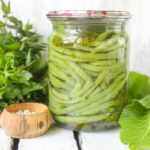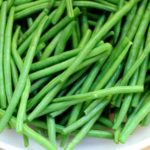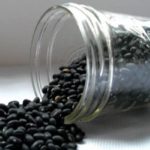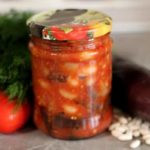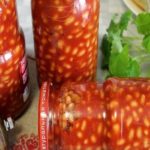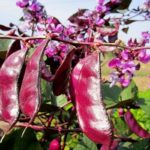White beans belong to the legume family. It is one of the most popular vegetable crops, valued for its dietary and medicinal properties. It is a versatile herbal product used to prepare many dishes. Beans are also used in the treatment of gastrointestinal tract, heart and even skin diseases.
- Specifics of white beans
- White bean varieties
- Chali
- Black eye
- Navy
- Moscow white
- White flat
- Lotus
- Belozerka
- White mares
- Landing dates
- Seed preparation
- Preparing the soil for beans
- Sowing beans
- Bean care
- Watering timing
- Plant nutrition
- Garter
- Protection from diseases
- Pest protection
- Collection and storage
- Composition and calorie content of white beans
- Beneficial features
- For men
- For women
- Use for treatment and prevention of diseases
- For diseases of the heart and blood vessels
- Diseases of the stomach, kidneys, bladder
- Joint damage and nervous system disorders
- Insulin dependence
- Skin diseases, wounds, cracks, ulcers
- The benefits of beans for weight loss
- Application in cosmetology
- Contraindications and possible side effects
- How to choose the right beans
Specifics of white beans
White beans are one of the most common types of legumes. The crop was first grown in South America. It is easy to care for and has a huge amount of useful microelements. The stems of the crop are straight and curly, up to 1 m high. The fruits ripen by autumn and have a cylindrical, slightly flattened shape. It is noteworthy that in ancient Rome the culture was used not only for food, but also for making whitewash and powder.
White bean varieties
Beans amaze with their variety of choice, as well as interesting external characteristics. White beans come in large, medium and small sizes. Each variety has its own characteristics and preferences for use. To make your choice, consider all varieties of white beans.
Chali
This crop is characterized by large fruits and delicate taste. Chali is widely used in Turkey and the Balkan Islands. It is used to prepare soups, side dishes, salads and flavorful stews.
Chali beans have an unusual trapezoidal shape. The fruits are slightly flattened and larger than other varieties. Boiled Chali tastes like potatoes, so it is often used as a side dish. It does not require long cooking; cooking time takes no more than 45 minutes.
Black eye
It is considered the most delicate of all varieties of culture. Thanks to the thin shell it cooks very quickly. The Black Eye variety is superior to other species in terms of energy value. It contains a lot of protein, starch, carbohydrates, dietary fiber, vitamins, with a minimal amount of fat. Black eye is more often used than other varieties of beans to treat many diseases and even prevent breast cancer.
Navy
This culture dates back more than 7 thousand years. She was bred in South America. Small pea-shaped fruits lead in fiber content, which makes them worthy competitors to other varieties, despite their small size. In medicine, Navy is used to achieve a diuretic and antimicrobial effect, as well as to reduce blood sugar concentrations. Before cooking, it should be soaked in water for at least 5 hours. In this case, the cooking time will take no more than 1 hour.
Moscow white
This variety of green pod white bean was bred specifically for the short summer days of central Russia. It is characterized by resistance to diseases and sudden temperature changes. The maximum length of bush-like plants is 40 mm. Moscow white beans are characterized by a rich harvest. You can collect an average of 1.2 kg per square meter.
White flat
Unlike previous varieties, White flat beans have not gained widespread popularity in our country. However, it has a high content of useful microelements, which is why it is actively used in folk medicine. Its unpretentiousness to soil and weather conditions allows it to be grown in almost all regions of Russia.
Lotus
A mid-early variety characterized by tasty, fleshy fruits.Gardeners prefer this variety for its good yield and ease of care. Lotus beans are also suitable for mechanized harvesting. Used in cooking, cosmetology and folk medicine. An excellent option for preservation.
Belozerka
A medium-sized mid-season bean with high sugar content. You can collect up to 50 pods from one bush. The fruits are medium size, round in shape.
White mares
Decorative climbing crop with large pods. It has lush bright green leaves. There are usually 3 fruits in one pod. This decorative crop is suitable not only for food cultivation, but also for landscaping various structures: gazebos, arches, houses. Does not lose color and shape until mid-September.
Landing dates
The crop is planted in open ground in May, taking into account the timing of the results and weather conditions. The soil should warm up to 10-12 degrees. You should also focus on the variety. Bush forms are planted earlier, and climbing varieties after 1-2 weeks.
With proper care, seedlings will appear on the 15-20th day after planting. Some gardeners prefer to pre-plant before planting in open ground. sprout beans. In this case, sowing is initially done in special containers, 2-3 weeks before planting in open ground.
In order for the crop to germinate faster and produce a rich harvest, it needs to be planted in a well-lit place. At the same time, regular watering and fertilizing should be done.
Seed preparation
Before planting, it is important to prepare the seed material. Although the crop is planted in May, this does not exclude a drop in temperature, which can negatively affect young shoots. To avoid such an unpleasant incident, the seeds are pre-hardened.
Note! Before planting, the seeds undergo careful visual inspection. Wrinkled, empty and spoiled fruits are selected.
You can also use the soaking method. To do this, soak the beans in clean water overnight. Seed material that has not undergone production treatment is soaked for 20 minutes in a weak solution of potassium permanganate.
However, it is worth noting that seeds that are not soaked before planting are more resistant to cold weather, since they do not hatch immediately.
Preparing the soil for beans
Light, fertile, well-drained soils are most suitable for legumes. If there is groundwater near the garden plot and the soil itself is clay, then there is a high risk that the crop will not grow.
To get a bountiful harvest, the soil is fertilized with compost or humus before planting seeds. You can also use superphosphate, ammonium nitrate or potassium chloride. The abundance of nitrogen in the soil will not have the best effect on the crop. The green mass will develop abundantly, but the pods will suffer.
Sowing beans
If you plan to grow several varieties of beans at once, it is recommended to plant them separately from each other. Since beans are self-pollinating, beds with different varieties can be located next to each other. But we should not forget that culture has a tendency to cross-pollinate. For example, if white beans grow near red ones, then red dots may appear on their fruits.
For the crop, a staggered planting order is used. The distance between the holes is 20-30 cm. 3-4 seeds are sown in each of them. Many gardeners practice wide planting, with a space of 50 cm between the holes.
If we are talking about tall climbing beans, first of all, prepare the supports, and then make holes near them and sow the seeds. The distance between rows is 100 cm, between holes - 60 cm. Climbing beans can also be grown in nests of 5 pieces. Growing bushes will cling to the peg, which is located near each hole.
It must be made of wood; the beans simply cannot catch on a plastic or metal support.
The depth of planting beans depends on the quality of the soil. The better the quality, the deeper the seeds can be planted. If the soil is light, beans are planted to a depth of 6-7 cm. On dense clay soils, the planting depth should not exceed 4 cm.
Bean care
After planting, the beans are immediately watered and the soil is compacted with a rake. If there is a threat of frost, the planted area is covered with a special film. When the seeds sprout, they are immediately earthed up. In this way they gain stability. Further care for the beans is as follows:
- weekly watering;
- timely removal of weeds;
- regular loosening of row spacing;
- feeding with superphosphate after the formation of the first true leaf;
- when the bushes reach two meters, they are plucked off from above to stimulate the formation of ovaries.
Watering timing
Beans are watered until the 5th leaf appears on the plants. Irrigation is then resumed before flowering, since plants will shed flowers at low humidity. In dry weather, watering is carried out once a week until flowering. After the flowers appear, the procedure is increased up to 2-3 times a week.
Plant nutrition
Beans are a demanding crop in terms of nutrition.A high yield can only be obtained in fertile soil, which contains the necessary elements for growth and development. It responds well to mineral and organic fertilizers.
Nitrogen compounds are added at the initial stages of growth. It is important to remember that they can inhibit ripening, so do not overdo them with dosages.
Good results are achieved by applying phosphorus and potassium fertilizers, especially molybdenated superphosphate. It is also recommended to use wood ash in garden plots.
The following microelements have a positive effect on the growth of beans:
- zinc;
- boron;
- manganese;
- copper;
- molybdenum.
Molybdenum is of particular importance. It is better to use it for pre-sowing seed treatment.
Garter
Tying the beans will not only prevent the bushes from spreading over the garden bed, but will also reduce the likelihood of the crop being damaged by pests and diseases. The supports should be made of wood.
The garter is made after the plants reach a height of 15 cm. They are wrapped around the support, starting from the first lower leaf. Fastening is done counterclockwise. This method will allow you to securely hook the plants onto the support.
Protection from diseases
To prevent fungal diseases, preparation of the area for beans begins in the fall. First of all, it is cleared of weeds, since it is in them that pathogenic microorganisms overwinter. Then potassium and phosphorus fertilizers are added to the soil, after which they are dug with a shovel. During the growing season, plants carry out 1, or preferably 2, fertilizing, using mineral fertilizers without nitrogen.
If infection by fungal diseases has already occurred, then active control measures are taken. To do this, plants are sprayed with copper-containing preparations., for example, a solution of Bordeaux mixture (1%).
To prevent root rot and powdery mildew, the seeds are soaked in Trichodermin or Baktofit before planting. Crops are also sprayed with these preparations before flowering.
For prevention bean diseases It is important to observe crop rotation every 4-5 years. That is, after such a period of time, plant the crop in its original place.
Pest protection
As with diseases, preventive and proactive measures are used to control pests. Preventive measures, in addition to those described above, also include collecting beans before the beans crack. To destroy pests, use the method of freezing fruits for 2-3 days. At a temperature of -10 degrees, adults, larvae and eggs die.
As for chemical measures to prevent pests, plants can be treated with Decis or Aktara before flowering.
The following biological products are used against sucking and gnawing pests:
- "Guapsin."
- "Planriz."
- "Trichodermin."
They can only be used before flowering.
Collection and storage
Harvesting begins in July and continues until autumn. The beans are ready when the fruit reaches 4-10 cm, it all depends on the variety. It is optimal to harvest early in the morning. Beans are harvested for grain after full ripeness, when the fruits become dense and the leaves dry out. When harvesting, the plant is pulled out, tied into a sheaf and placed for ripening. In sunny weather, the crop is left to ripen right in the garden.
To prevent the seeds from getting lost, place a film under the beans. After ripening, the plants are cleaned and sent for storage. Green bush varieties of beans are picked immediately after they are ripe. In climbing species, the fruits are removed several times per season.
White bean grains are characterized by their ability to be stored for long periods of time. Initially, they are removed from the pod and dried. To ensure that the seeds are well dried, they are laid out in a thin layer on cloth or paper. Stored beans should be in a warm and dry place. When the fruits are completely dry, they are stored.
Beans are not too demanding on conditions, the only thing that is important is to place them in the right container where condensation accumulates. Fruits should not be near heat sources. It is also worth emphasizing that freezing the beans will negatively affect its subsequent germination.
To protect the fruits from various insects, they are placed in glass jars and tightly closed with a lid.
Composition and calorie content of white beans
White beans are impressive in their composition. In terms of copper and zinc content, it surpasses all garden crops. It also contains the following microelements:
- vegetable protein;
- vitamin E;
- calcium;
- magnesium;
- B vitamins.
The taste of white beans is appreciated all over the world. Nutritious and healthy dishes are prepared from it, which are a worthy alternative to meat.
100 grams of white beans contain:
- 102 kcal;
- 47 g carbohydrates;
- 21 g proteins;
- 2 g fat.
Beneficial features
Beans are rich in beneficial microelements. They are used not only in cooking, but also for preparing medicines.
Regular consumption of white beans is very beneficial for health. It has the following positive effects:
- stimulation of gastric juice production;
- prevention of diseases of the nervous and cardiovascular systems;
- improved vision;
- decrease in blood sugar concentration;
- strengthening immunity;
- reducing and preventing swelling;
- improvement in the condition of hair and nails;
- improved skin recovery after cuts and injuries;
- cleansing the body of toxic substances;
- improvement of metabolism.
The calcium content in large quantities makes beans an indispensable product for bones and teeth.
White bean inflorescences are used much less often than fruits. However, they have no less beneficial properties. Inflorescences and pods of beans are useful for the following conditions:
- heart failure;
- renal pathologies.
Decoctions of dried bean leaves are used for rheumatism, gout and pancreatitis.
For men
Beans are a very healthy product for men. It saturates the body with vitamins and improves general condition. In addition, beans have a positive effect on sexual function and normalize the functioning of the genitourinary system.
For women
Since beans contain a large amount of iron and calcium, this product will help women improve the condition of their hair, skin, and teeth. It is often used for cosmetic purposes to prepare masks that have a rejuvenating effect. Breastfeeding women can use the “talker”. To prepare it, you will need to grind the bean seeds and mix them with wheat flour in equal quantities. Pour the mixture with the same amount of water, mix well, leave and take 2 tablespoons three times a day.
As for whole legumes, it is better to avoid consuming them while breastfeeding. This is because most babies have difficulty passing gas, and eating whole beans can make symptoms worse.
Use for treatment and prevention of diseases
White beans have been used as a medicine for hundreds of years.Not only the fruits of the crop, but also the leaves (pods) have medicinal properties. Let's look at what diseases white beans help with.
For diseases of the heart and blood vessels
Iron and magnesium, which are contained in the culture, help improve blood composition, strengthen the heart muscle, and reduce the risk of stroke and heart attack. White beans are recommended for the following diseases:
- atherosclerosis;
- arrhythmia;
- hypertension.
An effective cardiac decoction is prepared from the culture flaps. To prepare, you just need to pour 4 tablespoons of the leaves with two glasses of boiling water. The product is infused for at least two hours. Take 0.5 cups before each meal.
For atherosclerosis, a different recipe for preparing bean decoction is used. Bean shells (3 tablespoons) are filled with water (750 ml), brought to a boil and boiled over medium heat for 15 minutes. The broth is filtered through cheesecloth and diluted to its original volume with purified water. Take 150 ml on an empty stomach three times a day.
Diseases of the stomach, kidneys, bladder
White beans help normalize the production of gastric juice, so they are recommended for gastritis. This disease requires dietary adjustments; many foods are excluded from the diet. Beans can replace meat for gastritis. It is used to prepare nutritious dishes that keep you feeling full for a long time.
White beans have a mild diuretic effect, so they are used for kidney and bladder diseases. It dissolves stones and eliminates swelling. For inflammation of the bladder, 3 tablespoons of the plant are poured into 0.5 liters of boiling water and boiled over medium heat for 15 minutes.The decoction is infused for at least three hours, after which it is filtered and taken 0.5 cups before meals.
The following recipe is used for kidney stones. The bean shells are filled with water in proportions of 1:10 and cooked for 1.5 hours. Then the product is filtered and taken in the same way as described above.
Joint damage and nervous system disorders
The range of positive effects of white beans is not limited to the diseases described above. The product is successfully used for chronic rheumatism, gout and other diseases associated with blood vessels.
White beans are also used to restore the body after stress. They are included in the diet after severe operations and serious injuries.
Insulin dependence
For diabetes, beans are one of the main components in the diet. Due to its unique composition, it is used as an insulin substitute. Regular consumption of beans has the following positive effects:
- normalizes heart function;
- improves the condition of the walls of blood vessels;
- quickly heals injuries, cracks;
- reduces blood sugar concentration;
- accelerates regenerative processes.
Long-term use of the product stabilizes the functioning of the pancreas. Arginine, which is part of white beans, stimulates the production of urea and, accordingly, reduces the concentration of glucose in the blood.
Thanks to white beans, heart function improves, and this is a very important factor for patients with diabetes. The benefits of the product are equivalent for both types 1 and 2 of the disease.
In addition to eating fruits, a decoction of bean leaves is also prepared for diabetes. About 20 grams of the product is poured into a liter of boiling water and boiled over low heat for 30 minutes. The strained and cooled broth is drunk in small portions.The given dosage is calculated for 2 days. Use the decoction for 20 days. For a more effective effect, you can add 20 g of blueberry leaves to the recipe.
Skin diseases, wounds, cracks, ulcers
White beans contain a lot of sulfur, so they are used to treat skin diseases. The seeds of the crop are ground in a coffee grinder and then applied to the affected areas. This product has a pronounced wound-healing effect and is superior to many pharmaceutical products in effectiveness.
The benefits of beans for weight loss
The low calorie content of beans makes them one of the main products recommended for weight loss. White beans have a high concentration of protein and fiber. At the same time, they are low in carbohydrates, which makes them an ideal product when following a diet. The main feature of beans is that they satisfy hunger for a long time.
Thus, a person does not feel a constant need for food, as a result of which the diet is easily tolerated.
Beans are widely used in a protein diet. Scientists have long proven that its use enhances the synthesis of cholecystokinin, a hormone that speeds up metabolism and eliminates hunger.
Note! White beans have a low glycemic index, which gives a person the necessary boost of energy for a long time.
White beans are especially recommended for those who combine diet with intense physical activity. They can be eaten for breakfast, lunch and dinner. At the same time, frequent consumption of beans does not have any negative consequences for the body.
Application in cosmetology
White beans are widely used in cosmetology. Face masks based on it are suitable for absolutely all women.The actions of such cosmetics are aimed at whitening the skin and saturating it with useful microelements. Bean masks have a lifting effect, eliminate blackheads, bags under the eyes and various rashes.
Boiled and cooled grains are used for masks. They are sifted through a sieve so that no skins or lumps remain in the composition for the cosmetic product. Then mash the beans with a fork, add lemon juice and 1 tablespoon of olive oil. Apply the product to pre-moistened skin. Wash off after 15-20 minutes with warm water.
Contraindications and possible side effects
It is important to remember that beans can be eaten only after heat treatment. Raw seeds contain toxins that can cause serious poisoning. As for side effects, the product often causes flatulence. To prevent this from happening, the beans are soaked in water for a long time (preferably overnight) before cooking. You can add a little soda to the water.
After soaking, the cooking time of the legumes will be significantly reduced. There are varieties that require no more than 45 minutes to prepare. However, most of them take over an hour to cook. It is important to remember that it is better to overcook the beans than to undercook them, so there is no need to rush to remove them from the heat.
If you have colitis, stomach ulcers, gout, or cholecystitis, you should definitely consult your doctor before consuming legumes. Otherwise, the symptoms of the disease may only get worse. An absolute contraindication for the product is increased gastric secretion. Elderly people should also be careful when consuming beans.
The perfectly balanced composition of legumes will saturate the body with all the necessary microelements, even if you eat only different varieties of this crop. However, you should not get too carried away with mono-diets. It is enough to simply include white beans in your diet, diluting it with other healthy foods.
If you are allergic to beans, you should immediately stop eating them.
How to choose the right beans
When choosing a product to consume, it is important to pay attention to its appearance. The beans should not be spoiled, much less rotten. You should choose only whole grains that are uniform in size. Their surface should be glossy and shiny.
Beans must be stored in an airtight container and only in a dry place. Otherwise, the fruits may become moldy, and their consumption is fraught with severe poisoning.
What’s noteworthy is that you can store not only raw beans, but also boiled ones. To do this, the cooked product is cooled, placed in a plastic bag and sent to the freezer.
If you need to prepare a large number of boiled beans, they should be divided into small parts, each of which should be packed in a separate plastic bag, and placed in the freezer.

